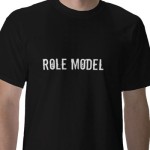Dr. Laura Hills, Blue Pencil Institute, www.bluepencilinstitute.com
 There’s been a movement in recent years for career professionals to liken themselves to businesses. Concepts such as self-branding, personal mission statements, and being the CEO of a company of one are intriguing ideas. They borrow concepts from industry and are designed to help career professionals gain clarity about what they’re doing and to find ways to relate to their audiences professionally. However, it’s dangerous to take this strategy too far, especially when we communicate with others.
There’s been a movement in recent years for career professionals to liken themselves to businesses. Concepts such as self-branding, personal mission statements, and being the CEO of a company of one are intriguing ideas. They borrow concepts from industry and are designed to help career professionals gain clarity about what they’re doing and to find ways to relate to their audiences professionally. However, it’s dangerous to take this strategy too far, especially when we communicate with others.
Career professionals are not corporations. We’re alive, mortal, and human. That’s our strength. When we speak before others, we have an opportunity to relate to them personally. A great deal of our effectiveness as speakers relies upon our willingness to show ourselves as genuine and human. Therefore, career professionals who communicate effectively don’t sound like walking, talking corporate-speak zombies. They avoid impersonal buzzwords, jargon, and clichés. Instead, they use more natural everyday language to convey their ideas.
Want some examples? Here are just a few of the words and phrases on my corporate-speak zombie list:
mission critical, zero-sum game, procurement, value proposition, re-engineering, mindshare, vis-à-vis, human capital, monetize, incentivize, operationalize, contextualize, and a host of other –ize words.
Do you agree that these words and phrases are overused and predictable and sound more corporate than human?
Dr. Laura Hills is an author, speaker, trainer, and coach who specializes in personal and professional development for career professionals. Join her mailing list for updates about her latest books, articles, and programs at: http://eepurl.com/Owd55.









